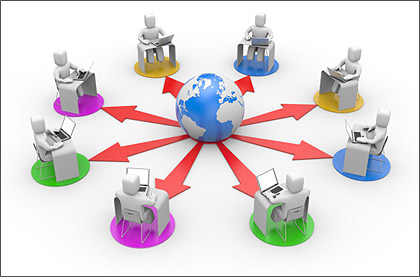In our modern
and vibrant world new forms of learning have changed the way in which we used
to learn. Today teachers do not have the absolute knowledge to teach students,
and students do not depend only on books to learn, ICT has played an important
role in education changing all the old paradigms that we knew. It offered a new
alternative to become literates and even brought a new kind of literacy with it.
However, a lot of people do not seem to understand how technology has
contributed to improve education, making it more realistic and somehow more
accessible at any time when you have the resources.
The use of technology
is so important now that the Unesco considers it one of the main competences students
must develop in school, so teachers have to be prepared to assume the role of
technological mentors and therefore, as teachers it is necessary to know some
basic concepts that we think we know, but we tend to confuse and if we are the
pattern to be followed, we should be very clear when we talk about:
- E-learning: e-learning refers to the use of internet or
wireless technologies to deliver a broad array of training solutions. eLearners
access the learning from a computers via the internet or an intranet, or
through a hand held device like a palm pilot.
- Distance
education: distance
education describes the effort of providing access to learning for those
who are geographically distant. The instructional delivery included an
instructor who was physically located in a different place from the
learner, as well as possibly providing the instruction at disparate
times.
- Online
or virtual learning: Online
learning is described by most authors as access to learning
experiences via the use of some technology. According to Benson (2002)
(cited in Moore, Dickson-Deane and Galyen (2011) online learning is a
newer or improved version of distance learning.
 |
| Image taken from:http://www.jfyboston.org/ |
- Blended
learning: it
is a formal education program in which a student learns at least in part
through online delivery of content and instruction with some element of
student control over time, place, path and or pace.
- Mobile
learning: mobile
learning includes the use of mobile phones, MP3 players, personal digital
assistants (PDA’S) and so on. Recent research has suggested that
m-learning works well in environments where access to these kinds of
technologies is more formal and accepted or where lifestyles demand more
flexible solutions to training and learning.

Image taken from: http://learninginhand.com/
The previously described concepts represent modalities,
types of education and tools that have certain characteristics which fit
specific needs. It is important to know what they are to be able to choose the
right tools and the best modality according to the purpose of the class.
The use of technology in education is not just a
fashion or a teacher substitute, it is a tool that helps us improve what we do.
References.
Bailey, J.,
Ellis, S., Scheider, C., Vander Ark, T. (2013) Blended Learning
implementation guide. Create conditions for success plan, implement, and
improve. Foundation for excellence in education. [Online document]
Retrieved from: http://net.educause.edu/ir/library/pdf/CSD6190.pdf
Moore, J.,
Dickson-Deane, C. and Galyen, K. (2011) e-Learning, online learning,
and distance learning environments: Are they the same? Internet
and Higher Education 14 (2011) 129–135 [online magazine] Retrieved
from: https://scholar.vt.edu/access/content/group/5deb92b5-10f3-49db-adeb-7294847f1ebc/e-Learning%20Scott%20Midkiff.pdf
The Herridge
Group (2003). e- learning, a definition. [Online document]
Retrieved from: http://www.herridgegroup.com/pdfs/eLearning%20a%20Definition.pdf

No comments:
Post a Comment